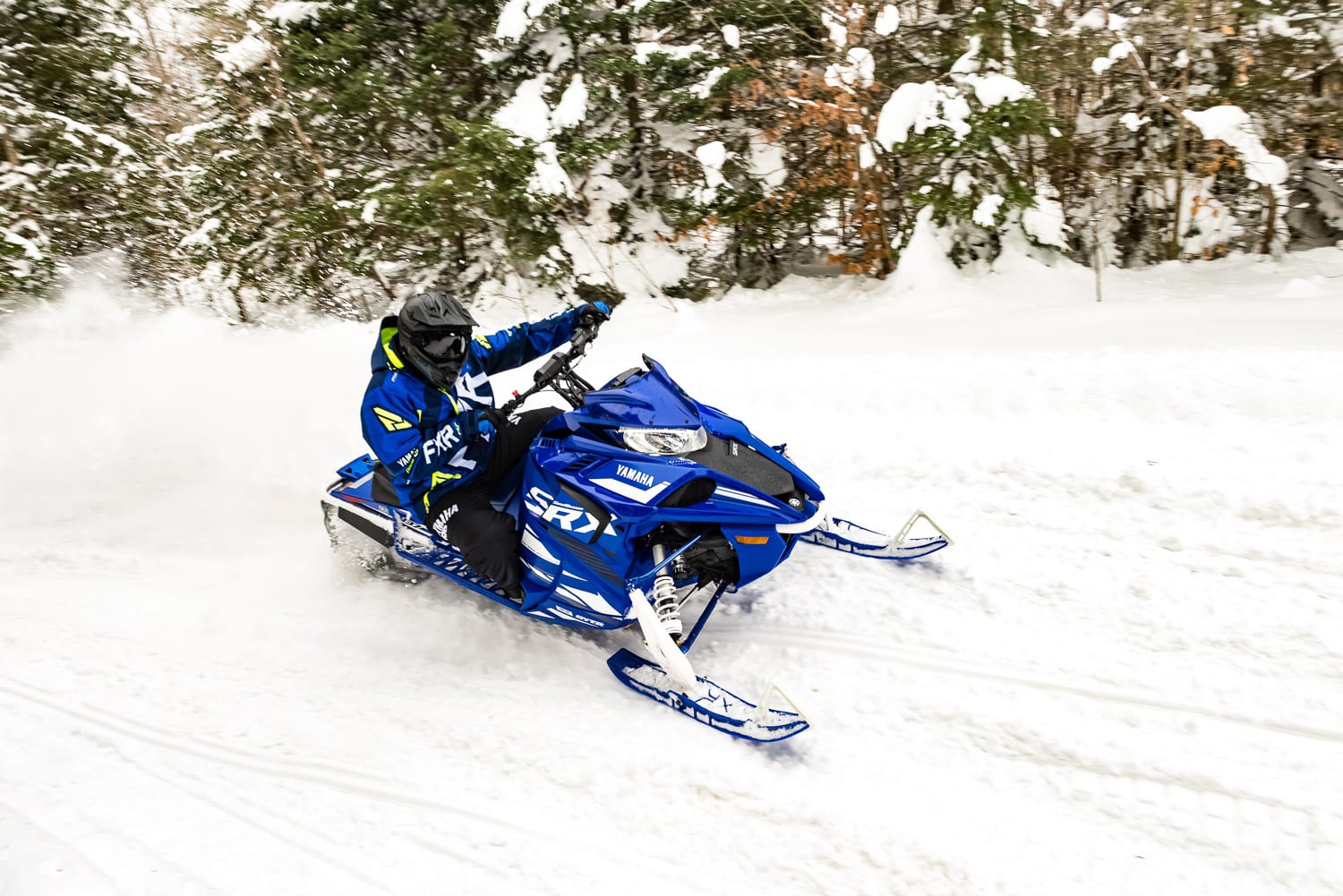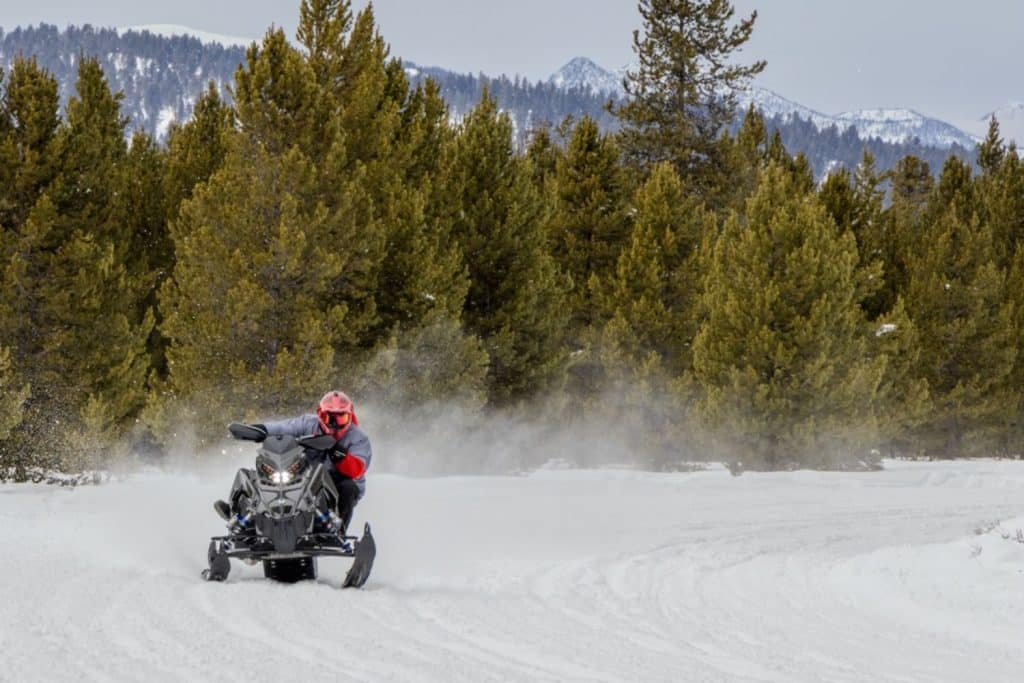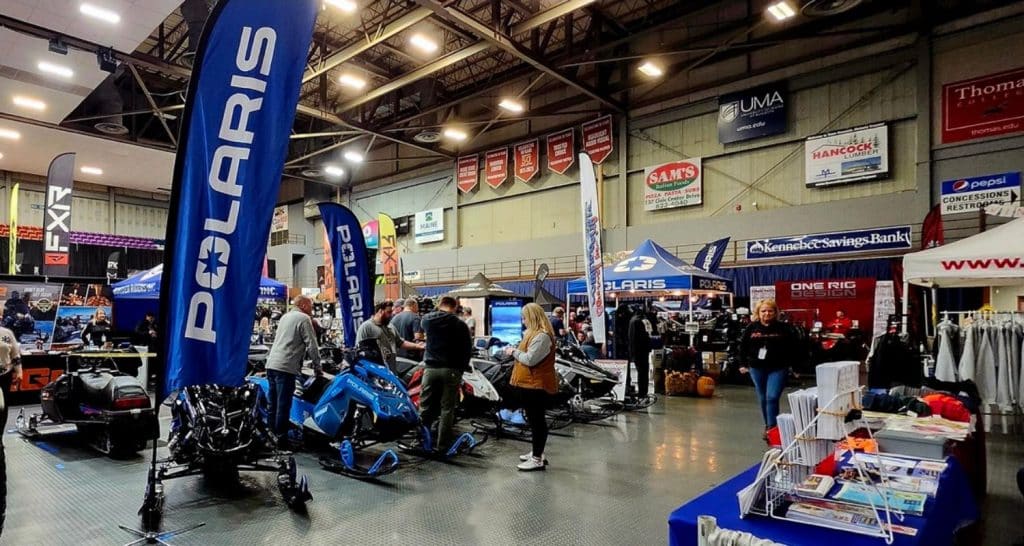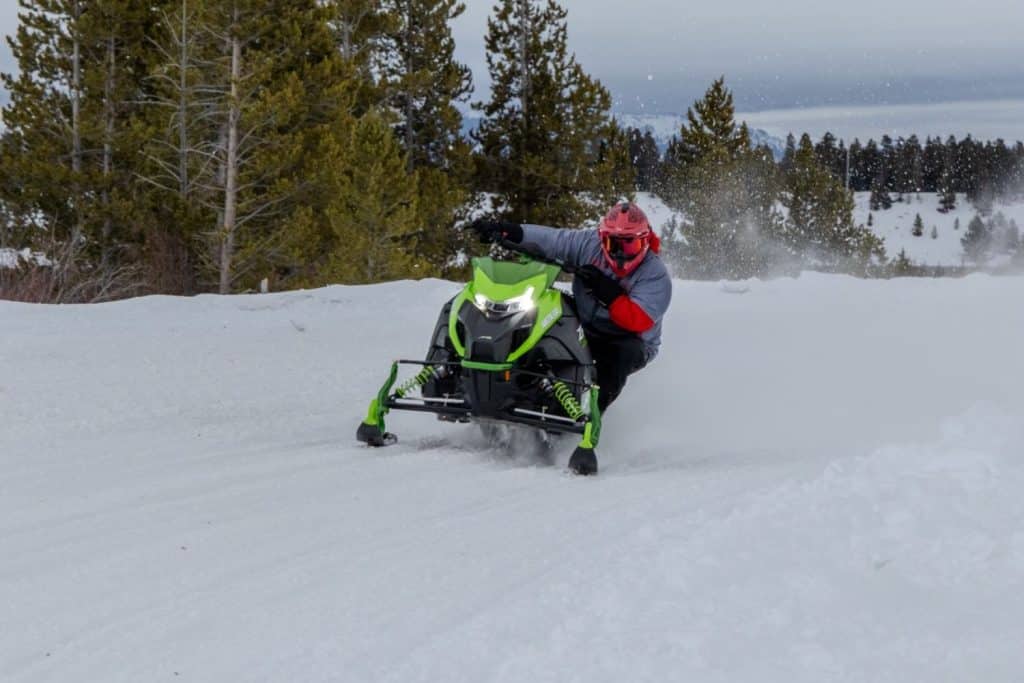The Japanese company has always been very conservative in its approach to the snowmobile market, its vision has always been to retain and satisfy its customers. 2019 will not go down in history at Yamaha, they want to decrease the A2A2W of 2018 models at dealerships, and by the same token, create a scarcity effect on certain models. It’s hard to read the future, but we have to admit that this way of proceeding leads to a lot of discussions and uncertainties regarding the manufacturer’s future in the snowmobile world. Nevertheless, the executives on hand at the Snowshoot reassured us that this approach was for the 2018-2019 season only.
Yamaha is bringing us a great comeback in 2019 : The Sidewinder SRX!!!
A little bit of history
The new season marks the return of the SRX, but with a lot of evolution since its beginnings… The very first limited edition SRX model was produced in 1974 and dedicated solely to racing. The very first production edition of the SRX was in 1976, two models were released, in 340 or 440 version. These two models marked a major turning point in the industry, they were the first two liquid cooled models, with a heat exchanger and coolant. The 1976 SRX left its mark on the racetrack with multiple victories including the prestigious Eagle River race. At the time, this snowmobile was typically designed for racing, with a fuel tank of only 12 liters, its engine had a very high compression ratio that required the use of aviation gasoline with an octane rating of over 100.
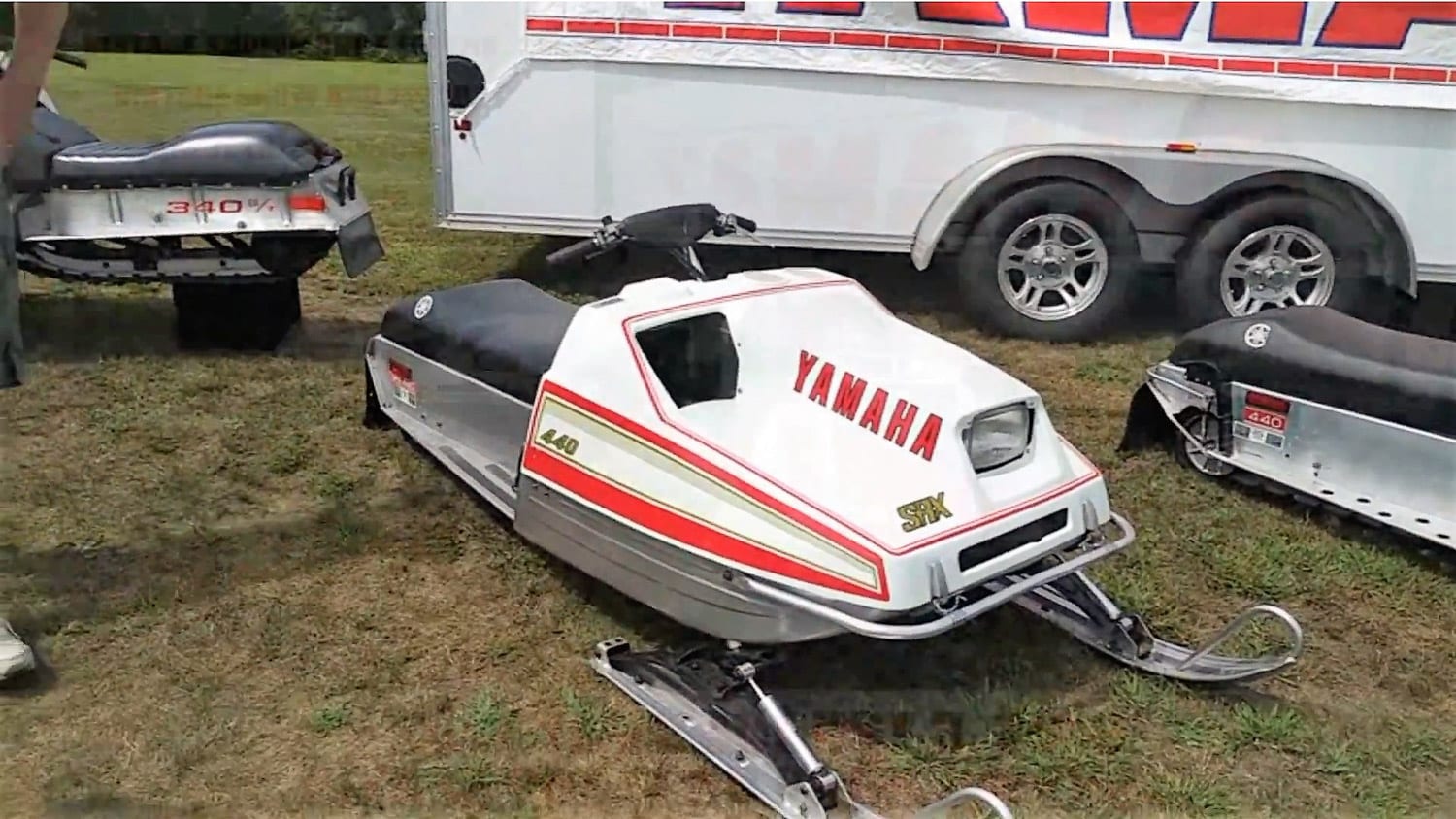
The first real production model for the trail was released in 1978, but with many modifications. Both drive shafts, driven pulley and sprockets were reinforced, as was the chassis to provide better long-term reliability. The cooling system was also improved with a longer, more efficient radiator. To become a trail snowmobile, a little more range was needed, and the fuel tank capacity was increased to 32 liters. At that time, the 440, which had undergone some modifications for trail riding, developed 80 horsepower.
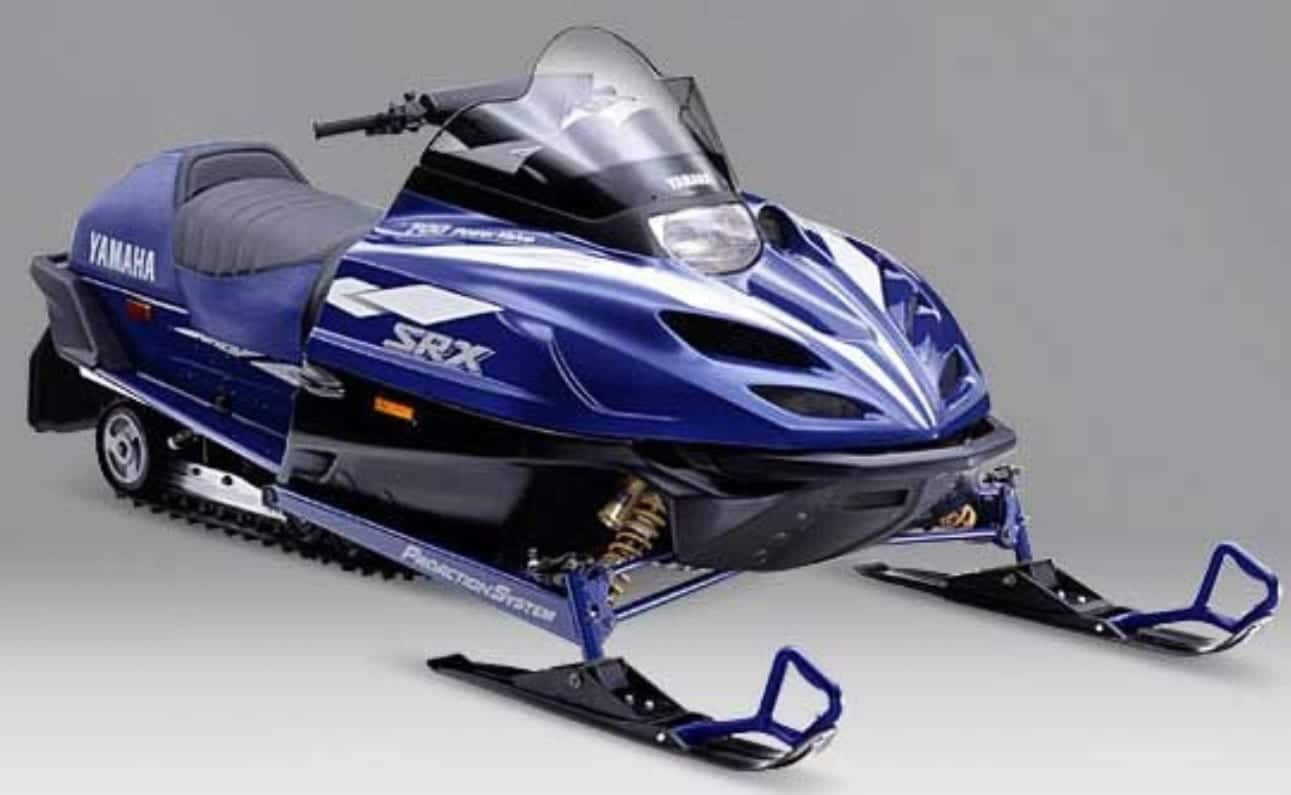
We had to wait until 1998 to get a brand new version of the SRX, with the famous 700 CC three-cylinder engine and three exhausts. This engine offered a purr rarely equaled in the snowmobile industry, it was a charm to the ear. This was also the first year of the Power Valve self-cleaning exhaust.
What about 21 years later?
No doubt the name and its performance credentials alone have carried it through two decades! Today’s SRX is still one of the fastest in the industry and will appeal to the adrenaline junkie looking for a sense of power and aggression. It’s basically a Sidewinder, but with a few small changes to make it a little faster. To improve top speed, the weight of the rotating parts must be reduced, so the car was fitted with a Hacksaw track with low-profile one-inch studs. This track is known for its high speed performance, has two plies and has a metal guide at each opening to improve rolling and reduce friction. The gear ratio is also different to achieve a higher top speed. An extra-low windshield is added to complete the package. The SRX is also equipped with three rear suspension wheels and the iQS suspension adjustment system, discussed later in this article.
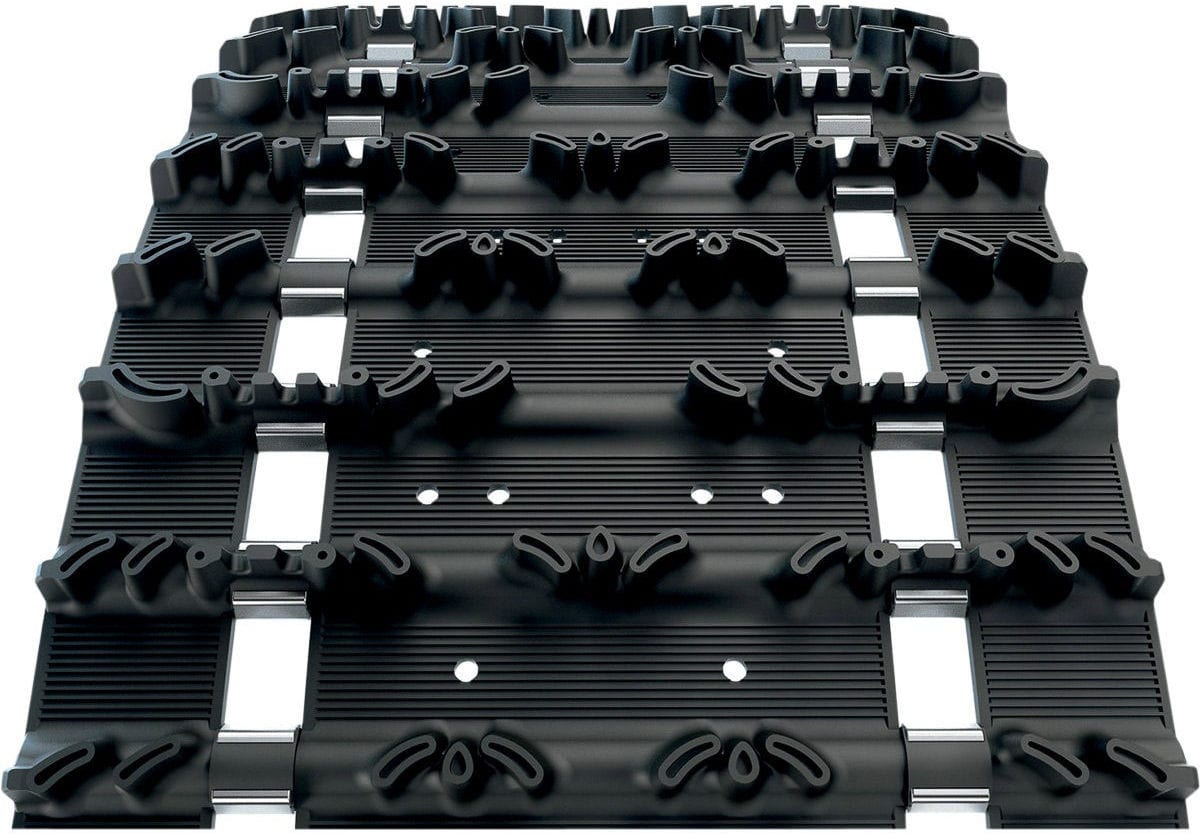
Since speed was the focus of the engineers, the center of gravity of the snowmobile was lowered. To achieve this, the initial resistance of all the suspension springs was reduced. In fact, it is the progressiveness of these springs that has been modified, we have kept the same resistance at the end of the stroke as the other Sidewinder models. On the other hand, the springs are much softer at the beginning of the stroke, which lowers the snowmobile in comparison with the stiffer ones at the beginning of their travel.
In order to make life easier for snowmobilers, Yamaha introduces a brand new electronic compression speed adjustment system for the iQS shocks. For the past few years, the FOX QS3 shocks have been used on several models in the lineup. These shocks are adjustable via a button on the shock that allows for three compression modes.
iQS System
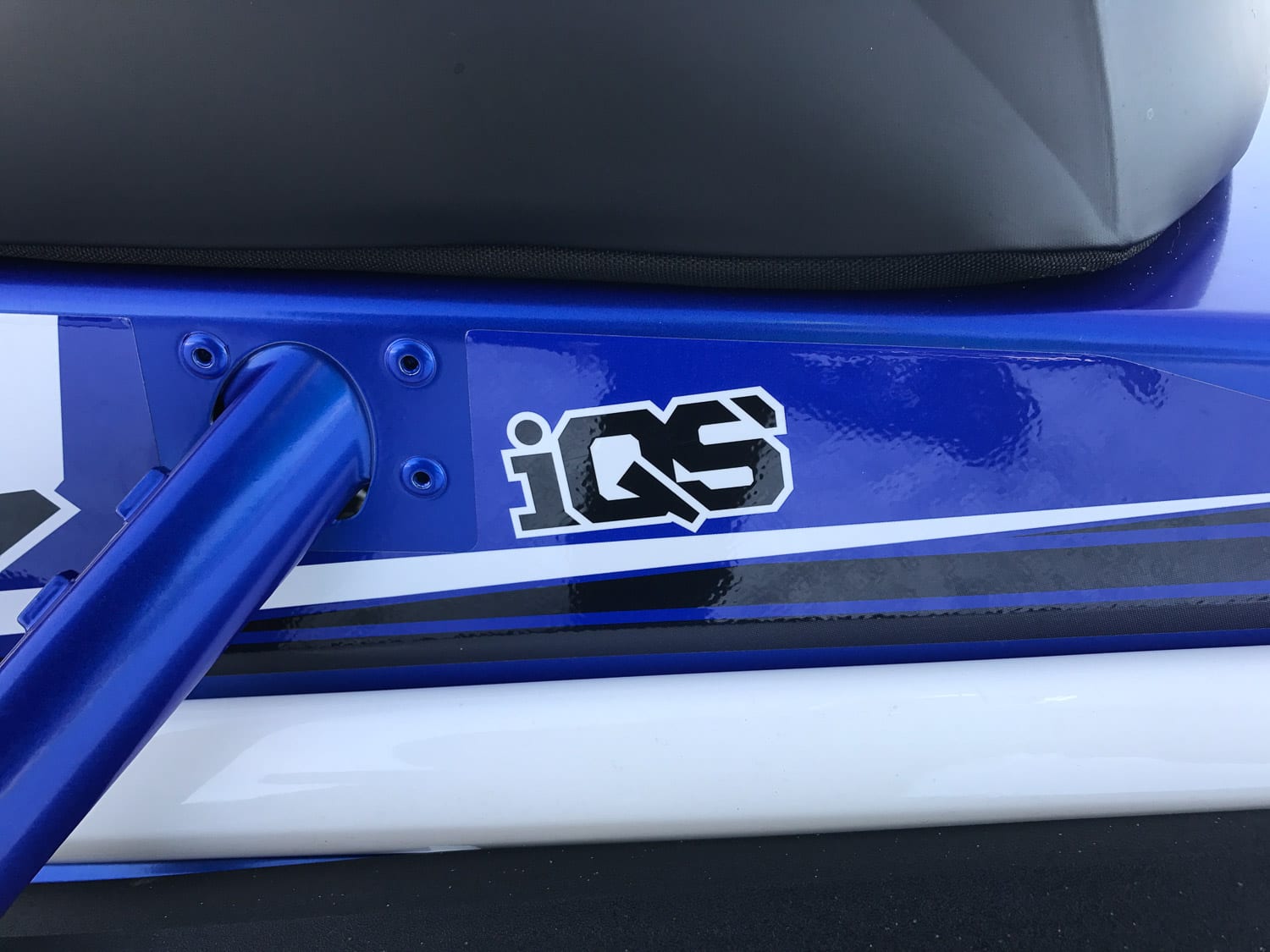
The iQS system is a sort of electronic version of the QS3 version, where switching from one mode to another is done electronically with a button on the handlebar. Each mode change is displayed on the rider’s LCD screen, allowing the rider to follow which mode he is in. The electronic module controls the two front shocks and the one completely at the rear.
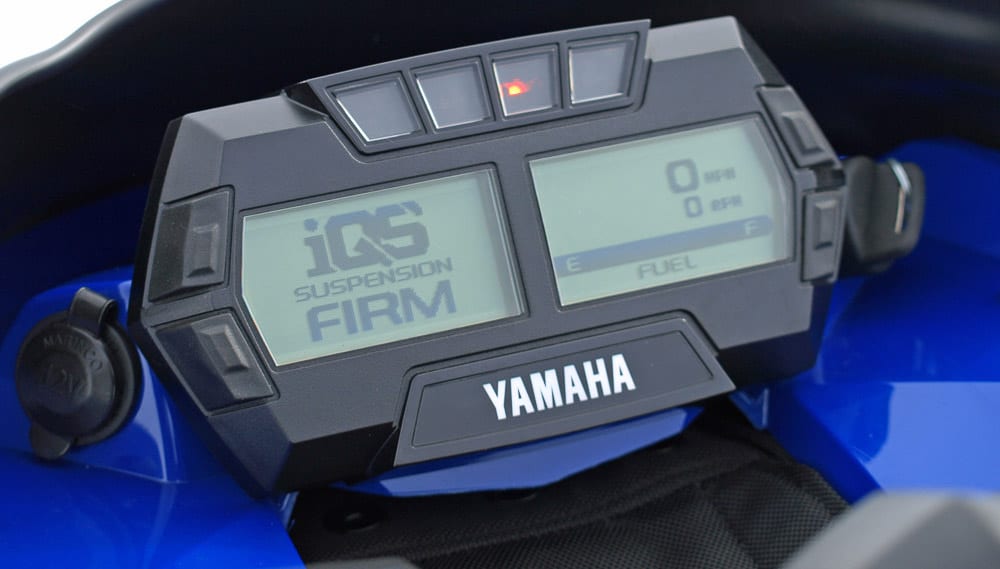
Emergency stop button
Safety and efficiency, Finally a new emergency stop button that is easy to use, especially in emergency situations!
Reverse button
Finally, some would say that the simplistic little back button that was difficult to reach with gloves is now a thing of the past… The button is now located on the left handle controls. Although the button is slightly recessed on three sides, the part facing the center of the snowmobile is completely open, which makes it easier to activate! Thank you for your help!
Suspension wheels
All L-TX Dual Shock SR 137 suspensions are now equipped with three support wheels at the rear end of the sled. Since the L-TX models are dedicated to the trail, this ensures better stability of the track during fast turns and allows the sled to remain centered.
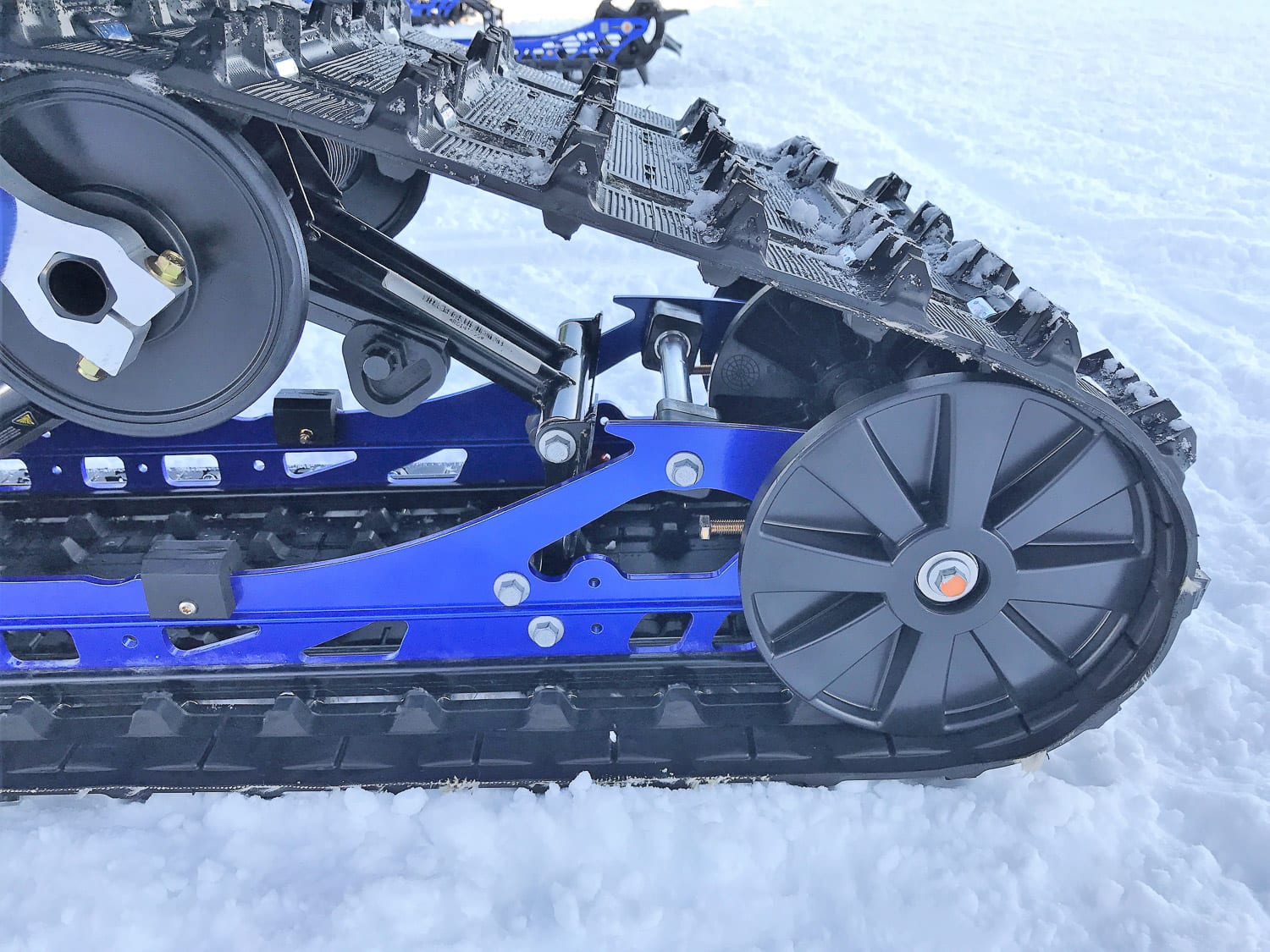
New Hayes brake
Thanks to a more efficient master cylinder, engineers have shortened the brake lever for one or two finger operation. This allows the rider to keep a better grip on the handle at all times!
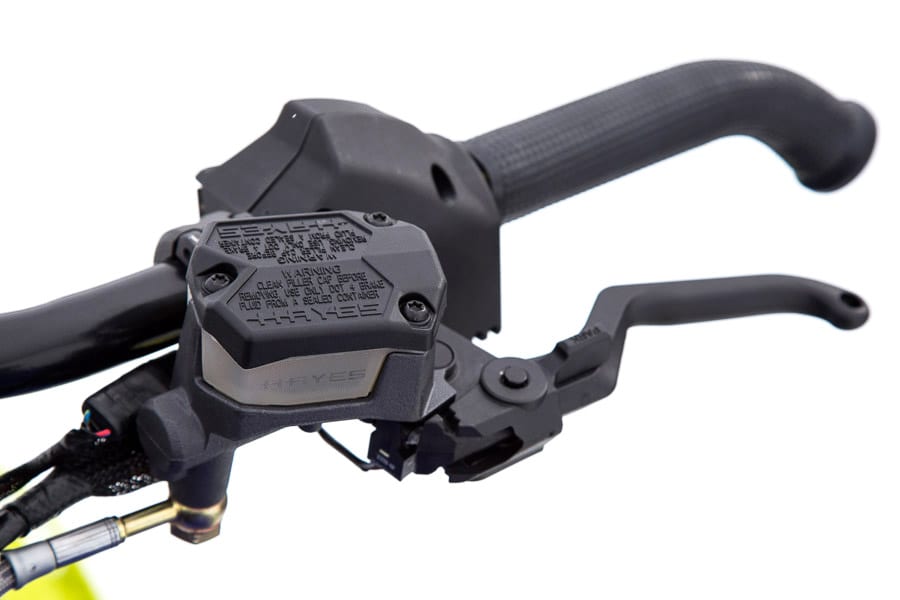
L-TX LE: new gear-gear combination
To improve acceleration and cornering, the L-TX LE version gets a more aggressive track, the Cobra with 1.6 inches of spikes. With the more aggressive track, the gear ratio has been decreased to 24/50 from 21/41.
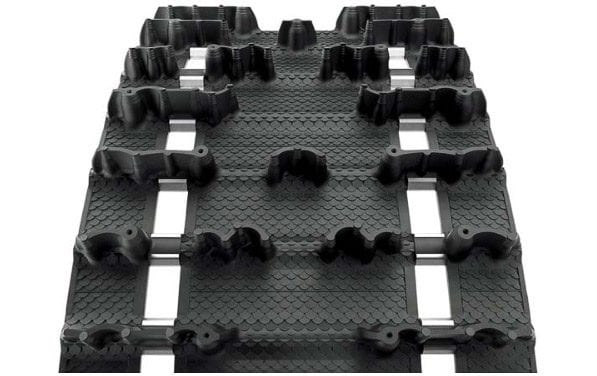
New gas pedal
The throttle lever developed for the Apex four-cylinder engine is now found on the new SRX. Developed to reduce the opening effort of the four throttle valves, it offers better ergonomic comfort, and less resistance for the rider!
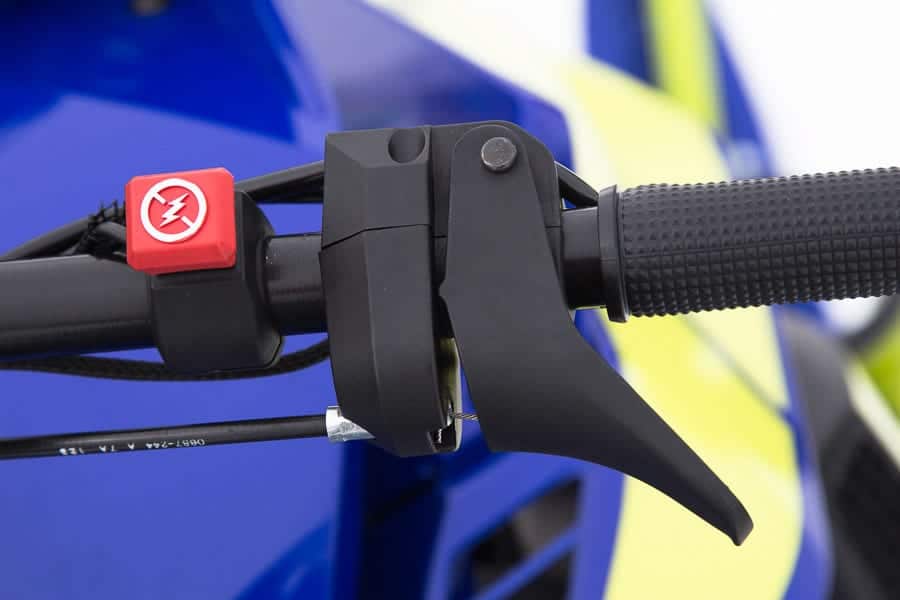
In the field
The SRX will certainly put a few smiles on your face next season, its cornering behavior is very stable, and reminiscent of the “welded to the ground” effect of the SRX of the late 90’s. With the bite of the Tuner III skis, there is a bit of track stall in turns, which is not a big problem in itself, and reminds us of the behavior of its predecessor. The suspension does the job well in normal trail conditions, but with a lower center of gravity, this is not a snowmobile that will perform well in big bumps, and that’s not the point. With the racing windshield, you won’t have any protection against the wind, so you’ll have to think about clothing in colder weather. The Hayes braking system does an excellent job, it takes a while to get used to the short lever and the force to be exerted, but after a few kilometers you can’t help but love it.
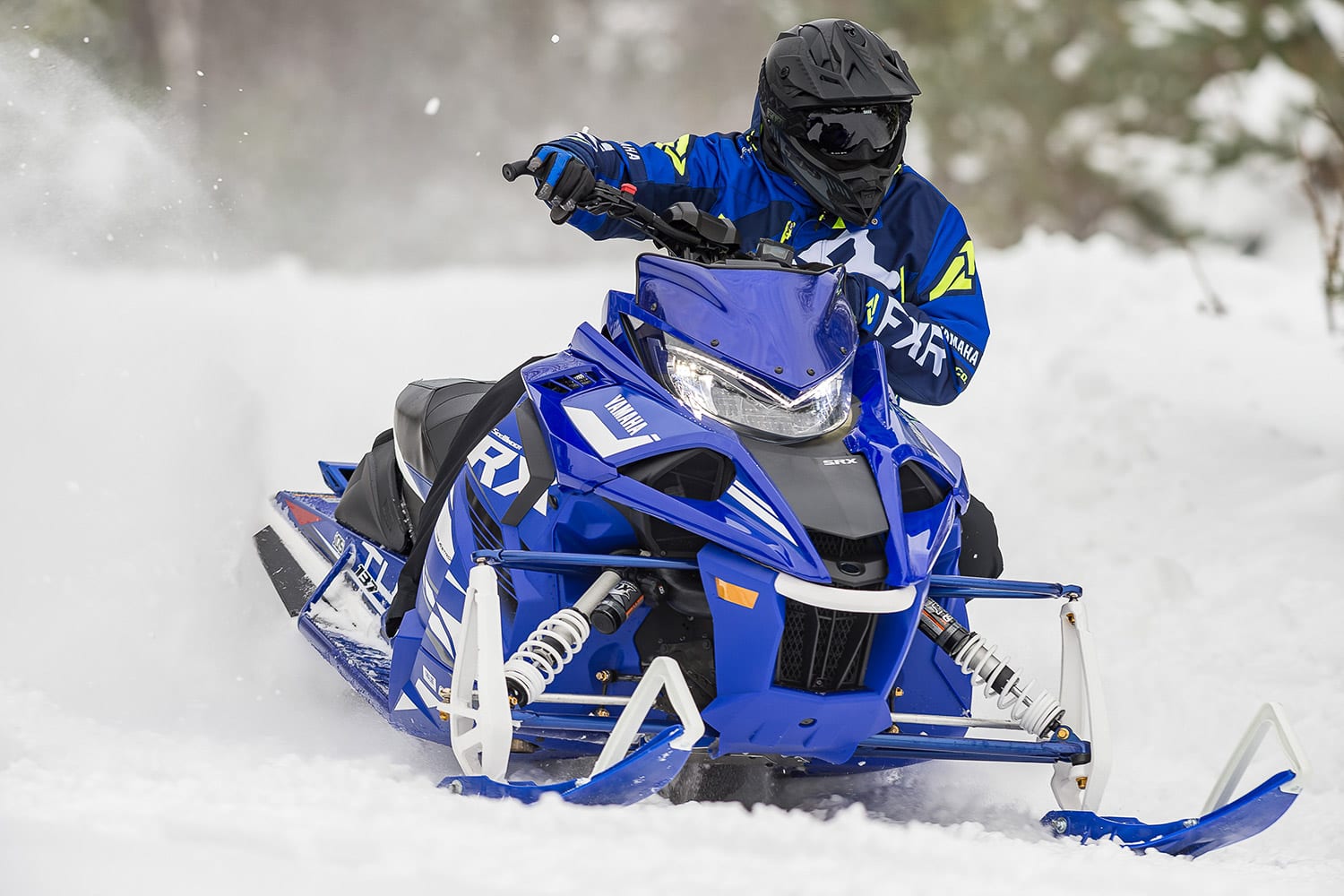
The new iQS suspension adjustment concept gives excellent results, it is very fast and easy to use. The change in ground conditions between two clubs becomes a feature that makes the driver smile. The difference between the modes is well set up, the transition from one mode to the other is easily noticeable by the reaction of the suspension. It is going to be difficult to respect the 70 km/h limit…
The disappeared
The 2018-2019 season marks the disappearance of several models, impossible at this time to determine if their disappearance from the lineup is permanent or not. One of the most notable disappearances is undoubtedly the removal of all 129-inch R-TX versions, both Sidewinder and SRViper.
The SRViper lineup has also melted in the sun, with only one model left available in 2019, the SRViper L-TX.
Also gone for the new season is the entire Phazer entry line, as well as the RSVenture two-seater and the Venture Multi-Purpose crossover. And the slimming down is complete with the departure of the VK Professional.
The snowmobile industry is hoping that the 2018-2019 reduction will be temporary to allow dealers to reduce their inventory. And that the company will soon resume production of certain segments, which are big sellers in Quebec.

